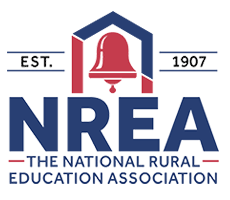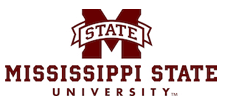Policies and Guidelines for Authors
Contents
- Who Can Submit?
- International Submissions
- General Submission Rules
- Peer Review
- Copyright and Open Access
- Open Access Policy
- Formatting Requirements
- General Terms and Conditions of Use
- AI Policy
Who Can Submit?
Anyone may submit an original article to be considered for publication in The Rural Educator provided he or she owns the copyright to the work being submitted or is authorized by the copyright owner or owners to submit the article. Authors are the initial owners of the copyrights to their works (an exception in the non-academic world to this might exist if the authors have, as a condition of employment, agreed to transfer copyright to their employer). There is no fee to submit a manuscript for review or for publishing an article in The Rural Educator.
International Submissions
As the professional journal of the National Rural Education Association we seek articles that have a salience for and connection to rural education in a variety of in- and out-of school rural education contexts including early childhood, primary, secondary, post-secondary, and adult education. International manuscripts from outside the U.S. are reviewed and are published from time to time. For submissions from outside the U.S. we seek manuscripts that explicitly address how the scholarship is applicable for readers outside your country.
General Submission Rules
Submitted articles cannot have been previously published, nor be forthcoming in an archival journal or book (print or electronic). Please note: "publication" in a working-paper series does not constitute prior publication. In addition, by submitting material to The Rural Educator, the author is stipulating that the material is not currently under review at another journal (electronic or print) and that he or she will not submit the material to another journal (electronic or print) until the completion of the editorial decision process at The Rural Educator. If you have concerns about the submission terms for The Rural Educator, please contact the editors.
Peer Review
The Rural Educator uses a double-blind peer review process for manuscripts submitted to the Research Article and Review of Literature sections of the journal. Manuscripts will first be reviewed by members of the editorial team for fit with the journal aims and scope. Scholars familiar with the topic and methodology will be invited to review submissions based on peer review criteria.
Copyright Statement
The Rural Educator applies the Creative Commons Attribution (CC BY) license to articles and other works we publish. If you submit your paper for publication by The Rural Educator, you agree to have the CC BY license applied to your work. Under this Open Access license, authors retain copyright for their work. In addition, you as the author agree that anyone can reuse your article in whole or part for any purpose, for free, even for commercial purposes. Anyone may copy, distribute, link to, or reuse the content as long as the author and original source are properly cited. This facilitates freedom in re-use and also ensures that The Rural Educator content can be mined without barriers for the needs of research.
Open Access Policy
The Rural Educator provides immediate open access to its content on the principle that making research freely available to the public supports a greater global exchange of knowledge. Members of the National Rural Education Association are eligible to receive print copies of The Rural Educator. Users have the right to read, download, copy, distribute, print, search, or link to the full text of articles in this journal, and to use them for any other lawful purpose.
Formatting Requirements
Manuscripts submitted to The Rural Educator should be prepared using the guidelines in the latest edition of the American Psychological Style Guide (currently, APA 7th edition).
- Submit your manuscript, including tables, figures, appendices, etc., as a single file
- Page size should be 8.5 x 11-inches.
- All margins (left, right, top and bottom) should be 1.0 inches (3.8 cm), including your tables and figures.
- If figures are included they should be high quality and formatted for both electronic/online and print versions of the journal.
Article Length
Although there are no minimum or maximum page or word length requirements for the journal, a general guideline is that research and review of literature articles are between 20-25 double-spaced pages in length, excluding references, tables, and figures, and promising practice articles are generally 5-7 pages in length.
Colored text
Any images or text in color will be published with color for the online version of the journal and will be converted to black and white for the print version of the journal. Authors should consider whether any color images or text will reproduce well in black and white.
Footnotes
Footnotes are discouraged.
Tables and Figures
To the extent possible, tables and figures should appear in the document near where they are referenced in the text. Large tables or figures should be put on pages by themselves. Avoid the use of overly small type in tables. In no case should tables or figures be in a separate document or file. All tables and figures must fit within 1.0" margins on all sides (top, bottom, left and right) in both portrait and landscape view.
General Terms and Conditions of Use
Users of the Scholars Junction website and/or software agree not to misuse the Scholars Junction service or software in any way.
The failure of Scholars Junction to exercise or enforce any right or provision in the policies or the Submission Agreement does not constitute a waiver of such right or provision. If any term of the Submission Agreement or these policies is found to be invalid, the parties nevertheless agree that the court should endeavor to give effect to the parties' intentions as reflected in the provision, and the other provisions of the Submission Agreement and these policies remain in full force and effect. These policies and the Submission Agreement constitute the entire agreement between Scholars Junction and the Author(s) regarding submission of the Article.
AI Policy
JRRE and TRE recognize the growing use of Artificial Intelligence (AI) technology. However, we note that its use warrants caution for a variety of reasons, including its documented racial and cultural biases. This policy offers guidance to authors, reviewers, and editors regarding the use of generative AI and AI-assisted technologies. As AI technologies continue to evolve, so will our policies. Please continue to refer to the respective journal pages for any updates to our policy.
AI Policy for Authors
Authors that use generative AI need to detail its use in the methods section of the manuscript, as well as the cover letter upon submission. They need to include how AI was used (e.g., finding sources, formatting tables), as well as where in the manuscript that AI-generated support was used, with APA citations, as appropriate. See https://apastyle.apa.org/blog/how-to-cite-chatgpt for an example of appropriate usage and documentation. This discussion should be sufficiently detailed so that another researcher could replicate its use and obtain similar results and readers can distinguish between AI-generated support and human-generated content. AI cannot be listed as an author and should not be used for text generation. Submission to the Rural Educator or Journal of Research in Rural Education implies consent for journal editors to use an AI-checker, if they deem it necessary. Final judgements about potential undisclosed use of AI use fall to the editors. This includes the right to reject manuscripts at any stage in the publishing process.
The use of AI for generation of tables and figures is limited to the design formatting of tables and figures. Using AI to generate the content of tables and figures is not allowed.
The use of generative AI is different from the use of language-assistive tools, which authors have historically used to improve grammar and syntax (e.g., finding synonyms, correcting grammar) without declaration of such usage. However, language-assistive tools should not be used to generate full sentences.
A peer-reviewed journal relies on the specialized expertise of reviewers to ensure high-quality publications that meet the journal’s unique goals and aims. To that end, we cannot accept reviews created with generative AI. We value the service to the profession reviewers provide, and through this policy, strive to maintain the integrity of the peer-review process. We ask reviewers to refrain from entering manuscripts into AI checkers. If you have concerns about potential AI use in a manuscript you’ve been asked to review, please communicate with the editor.
- COPE Position Statement: Authorship and AI tools | COPE: Committee on Publication Ethics
- U.S. Copyright Office Guidance: Federal Register :: Copyright Registration Guidance: Works Containing Material Generated by Artificial Intelligence



